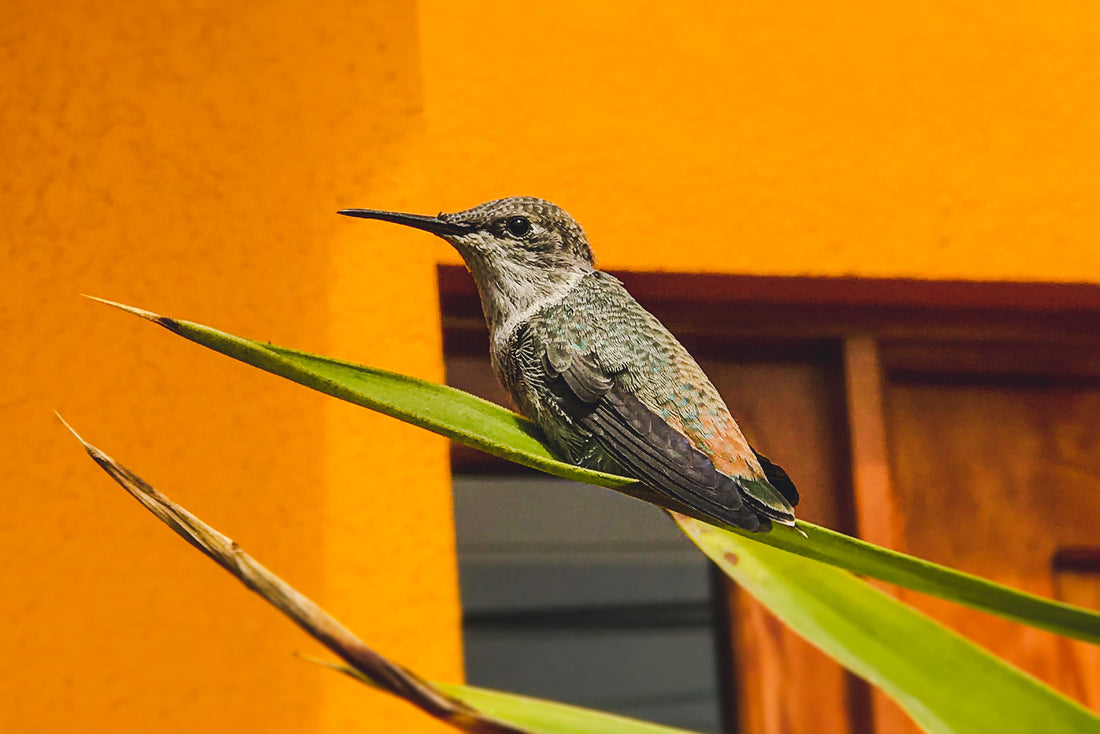
Hummingbird Feeder Placement: Finding the Perfect Spot for Maximum Visits
Share
Hummingbirds are fascinating creatures that bring joy and beauty to any outdoor space. If you've decided to set up a hummingbird feeder in your garden, patio, or balcony, finding the perfect spot for it is crucial to attract these delightful visitors. In this article, we will explore the various factors to consider and the ideal locations for placing your hummingbird feeder.
Introduction
Hummingbirds are small, agile birds known for their vibrant colors and unique ability to hover in mid-air. They have an incredibly fast metabolism, and their diet primarily consists of flower nectar and small insects. To supplement their natural food sources, many people set up hummingbird feeders in their yards to provide a consistent supply of nectar. However, the placement of these feeders plays a vital role in attracting hummingbirds and ensuring their safety.
Understanding Hummingbirds
Before we delve into the details of feeder placement, it's essential to understand a few aspects of hummingbird behavior. Hummingbirds are highly territorial and will vigorously defend their feeding areas. They are attracted to bright colors, particularly red, and are sensitive to changes in their environment. These characteristics will guide us in choosing the best location for your feeder.
Importance of Hummingbird Feeders
Hummingbird feeders serve as supplemental food sources, especially during times when natural nectar supplies may be scarce. They also provide an opportunity for bird enthusiasts to observe these fascinating creatures up close. By strategically placing the feeders, you can create an inviting environment that attracts a higher number of hummingbirds.
Factors to Consider for Hummingbird Feeder Placement
When determining the placement of your hummingbird feeder, several factors should be taken into account:
1. Sunlight and Shade
Hummingbirds prefer to feed in areas with dappled sunlight or partial shade. Placing your feeder in such locations helps prevent the nectar from spoiling too quickly and provides the birds with a comfortable environment.
2. Distance from Windows and Obstacles
To avoid collisions, it's crucial to position the feeder at a safe distance from windows and any obstacles such as walls, fences, or hanging plants. Hummingbirds can fly at high speeds, and collisions with these objects may cause injury or even death.
3. Vegetation and Landscaping
Hummingbirds are attracted to areas with ample vegetation, as they provide natural cover and foraging opportunities. Consider placing your feeder near flowering plants or hanging baskets to create an appealing feeding habitat.
4. Safety and Protection
Hummingbirds are vulnerable to predators such as cats and larger birds. Ensure that the feeder is positioned in a safe and protected area, preferably with good visibility so that the birds can detect any potential threats.
Ideal Locations for Hummingbird Feeders
Based on the factors mentioned above, here are some ideal locations for placing your hummingbird feeder:
1. Porches and Patios
If you have a porch or patio, hanging the feeder in these areas can offer an excellent vantage point for observing hummingbirds. Ensure there is sufficient shade and vegetation nearby to create an inviting atmosphere.
2. Gardens and Backyards
Placing the feeder in your garden or backyard provides a natural setting for hummingbirds. Consider positioning it near flowering plants, shrubs, or trees to attract these birds with both the feeder and the surrounding flora.
3. Balconies and Rooftops
Even if you live in an urban area, you can still attract hummingbirds to your balcony or rooftop. Hang the feeder in a safe location, preferably near potted plants or window boxes filled with flowers.
Maintaining and Monitoring the Feeder
To keep your hummingbird visitors happy and healthy, it's crucial to maintain and monitor the feeder:
1. Regular Cleaning
Clean the feeder at least once a week to prevent the growth of mold or bacteria. Use a mixture of hot water and mild soap, followed by a thorough rinse. Avoid using harsh chemicals or detergents.
2. Refilling and Fresh Nectar
Regularly check the nectar levels in the feeder and refill it every few days, especially during hot weather. Prepare fresh nectar by dissolving one part white granulated sugar in four parts boiling water. Let it cool before filling the feeder.
Conclusion
By strategically placing your hummingbird feeder in the right location, you can increase the chances of attracting these delightful birds to your outdoor space. Remember to consider factors such as sunlight, shade, obstacles, and vegetation when selecting the perfect spot. Additionally, ensure regular maintenance and monitoring to provide a clean and constant supply of fresh nectar. Enjoy the beauty and grace of hummingbirds as they visit your feeder in their quest for nourishment and energy.
